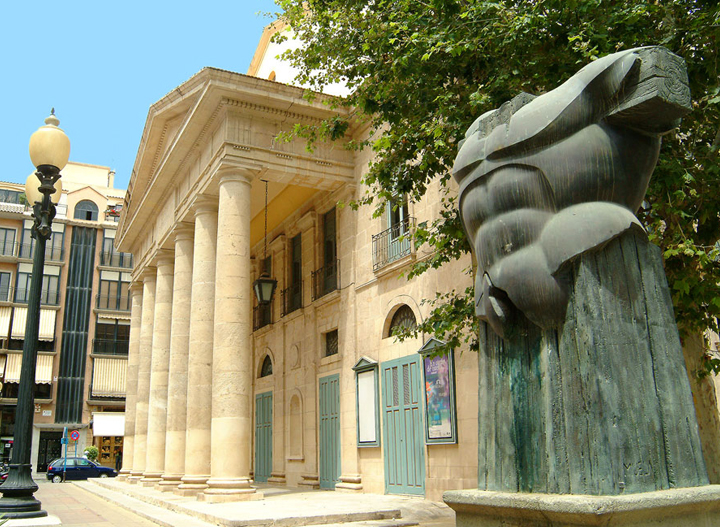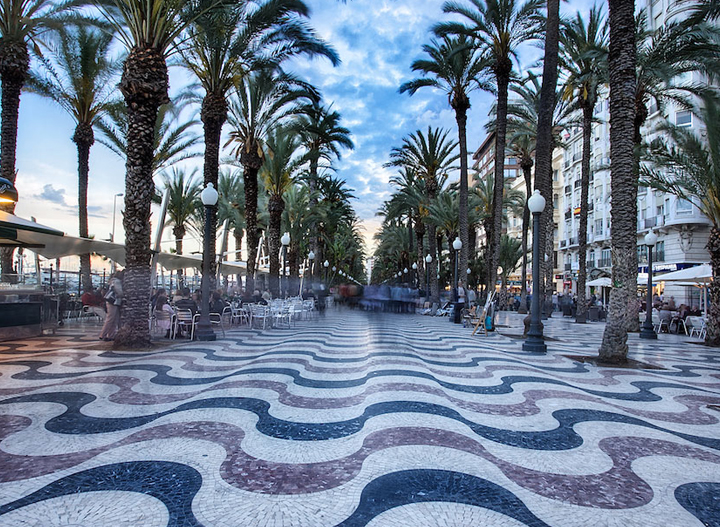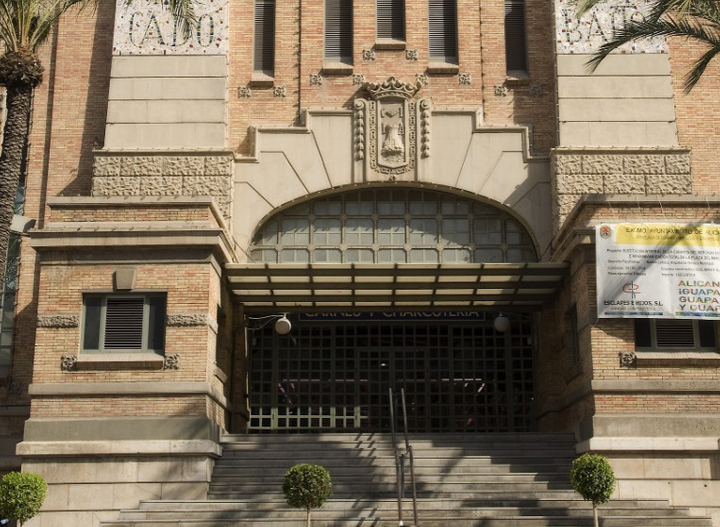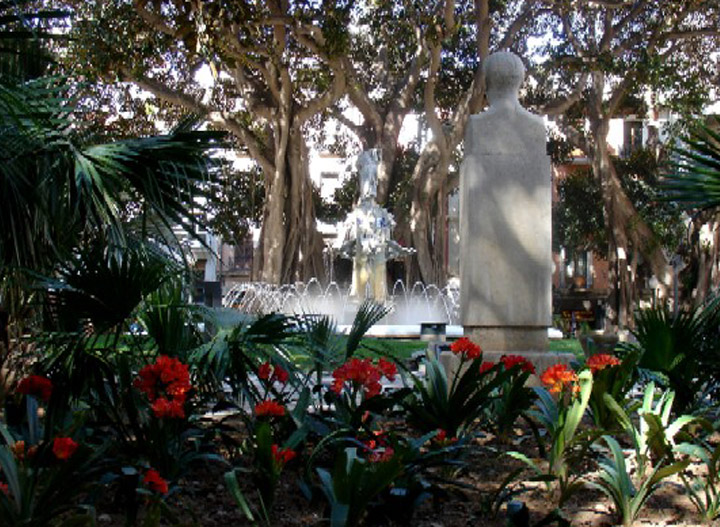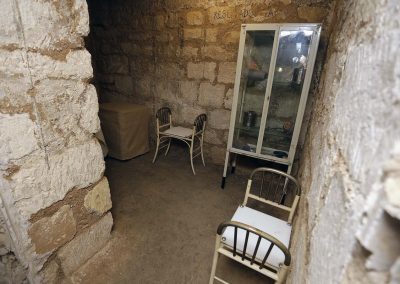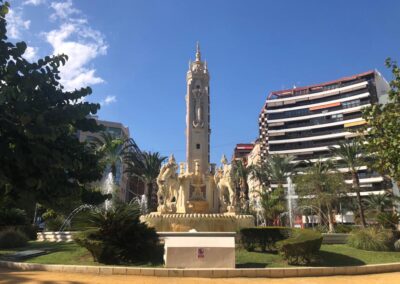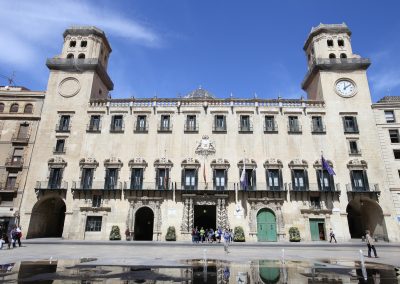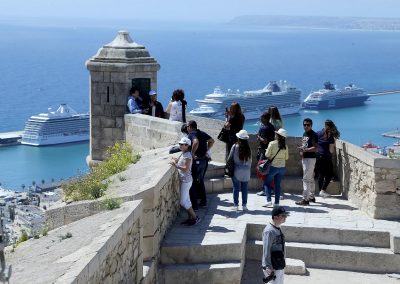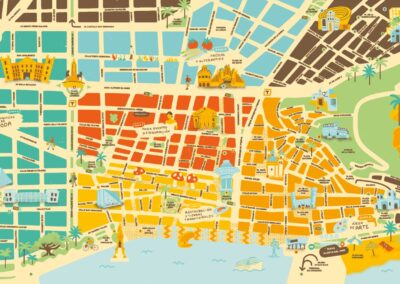 City walk: The walls of Alicante
City walk: The walls of Alicante
Walking routes
Tourist guides
Official Tourist Guides accredited by the Valencia Region Tourist Board
Maps, brochures and apps
Weather, postal services, language, banks, bank holidays, electricity, meal times.
Public transport
Tram, city and intercity buses, TURIBUS, long distance trains, high-speed trains (AVE).
Tourist info offices
(+34) 965 177 201
turismo@alicanteturismo.com
1. Teatro Principal de Alicante
The construction of this new theatre in the middle of the 19th Century implied two significant effects: the confirmation of the existence of an raising social class of businessmen that created the most important public construction of that century and the consolidation or an emerging urban structure used a link of the walled city of the 18th Century and the new area of the city at the end of the 19th Century. This is a typical example of a high number of theatres that were being built at that moment in the whole country. The interior of the theatre is a typical reflection of the Italian style with a horseshoe-shaped floor.
Avenida de la Constitución: the leisure area approached this zone when Alicante began to grow. The main buildings of that period were created there: Casa de Socorro or the Cine Ideal, the only cinema in the city that has survived the privileged period the cinematography lived in the 20s thanks to the industrial society that loved this mass pastime.2.
2. La Explanada
Walk along the esplanade to reach the wide area. This esplanade was one of the first seafronts built at the end of the 19th Century. After the demolitions of the walls, the rubbles were used to level the land and to create this esplanade. The current esplanade was built in the 60s and the mosaic has a total of 6.600.000 pieces. We observe three colours, one of them is called red Alicante, since this colour of marble can only be found in Alicante.
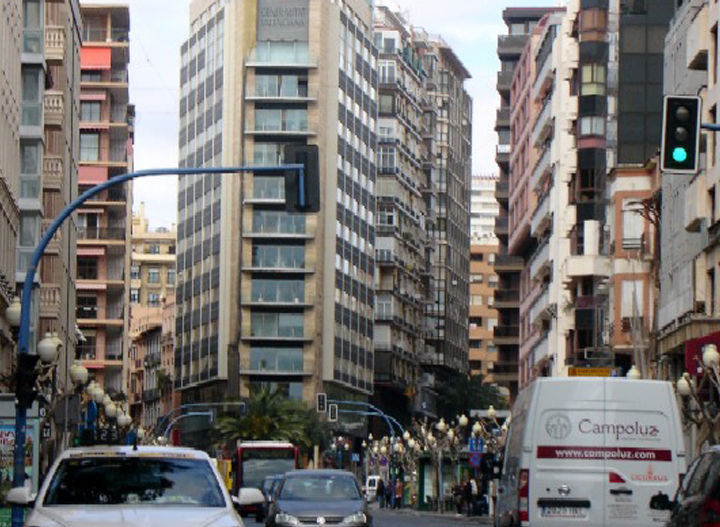
3. Rambla Mendez Nuñez
This avenues is the limit between old quarter (left) and the historic centre that was about to emerge (right). The Rambla is a dry river bed that only carries water when it rains a lot. The city hardly had grown in the previous years beyond the Rambla because this was a natural limit that the inhabitants preferred not to cross. When the city had no more room to spread, they began to build on the other side of the Rambla.
4. Mercado Central
The current central market is located in the avenue Alfonso X el Sabio, as a deference to the King that conquered the city fighting against the Muslims in the 13th Century. This was the liveliest area in that period and nowadays it still is one of the main avenues. The central market was built at the beginning of the 20th Century and afterwards it was bombarded during the civil war, some parts of this market had to be reconstructed.
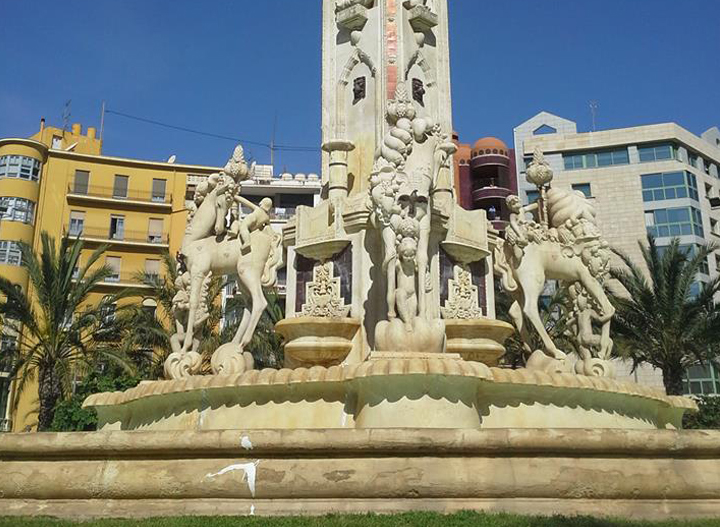
5. Plaza de Los Luceros
We have walked along the avenue Alfonso X el Sabio, which ends in plaza de los Luceros, one of the most important squares of the city. The current fountain was built at the beginning of the 20th Century, but the reason of the significance of this square: The city needed town planning to keep on building after the walls were demolished and, taking as an axis this squares, the rest of the avenues were built. We will use one of these avenues to reach our next stop.

6. Diputación de Alicante
The palace of the Council of Alicante was built in the 30s. This building is a reflection of the significance of this avenue linking the train station to the centre of the city at that moment. This avenue ends in the train station, to which the Queen arrived in 1858 when she inaugurated the station although the original one was not preserved.
We are going to go round some of the streets in the centre of the city. This is a walk that will allow you to see some of the most typical streets of the city up to the departure point.
7. Plaza Gabriel Miró
In this square there were already constructions before the demolition of the walls, its current layout dates back to the 19th Century. This Square is the reflection of the bourgeois city and of the ideas of urban aesthetics of the new dominant class. At the same time, more squares were built throughout the city with the wish of making Alicante more beautiful. The current fountain was placed to commemorate the collection of water from a village of the province in 1898 due to the need of water in Alicante for supply.










